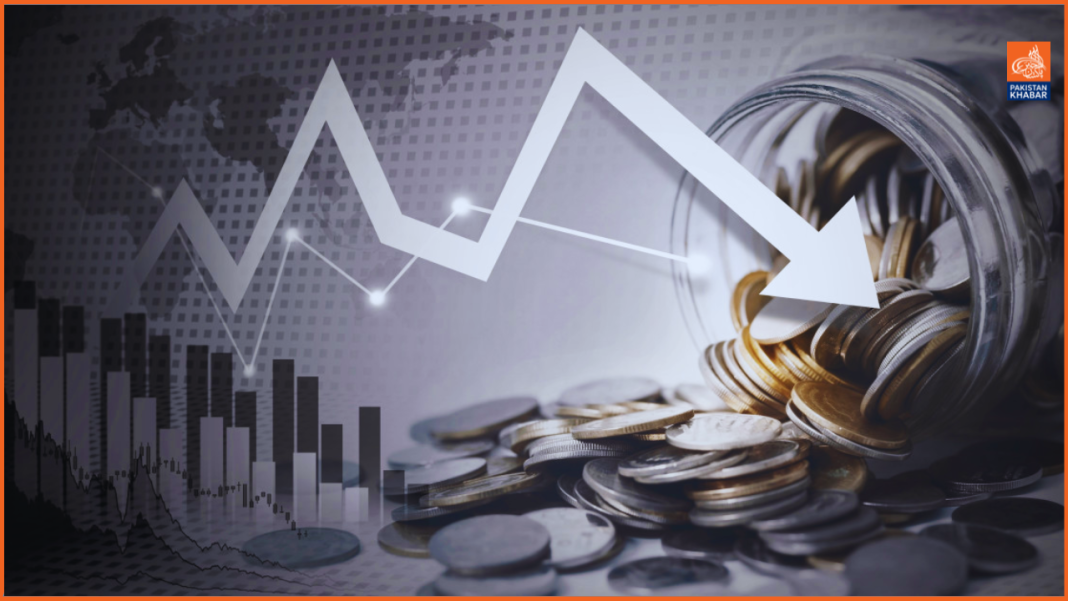Despite facing challenges such as a notable drop in fertilizer off-take and reduced cotton sowing, the government remains optimistic about Pakistan’s economic future. On Friday, officials projected a positive economic trajectory, bolstered by a supportive monetary policy, sound fiscal management, and diminishing inflationary pressures. The consumer price index (CPI) is anticipated to stabilize between 8-9 percent in the upcoming months of September and October.
In its recent monthly economic update, the Ministry of Finance (MoF) outlined several encouraging developments within the economy during the first two months of FY25. Most economic indicators demonstrated improvement, showcasing resilience amid ongoing challenges. The MoF highlighted that inflation has decreased to single-digit levels, industrial output has risen, and critical exporting sectors are witnessing growth, which bodes well for future export performance. Additionally, the current account deficit has narrowed, contributing to a more robust fiscal environment.
The report emphasized the recovery of Large-Scale Manufacturing (LSM), with major exporting sectors poised to ramp up production after previous declines. This rebound is expected to be further supported by a favorable external economic environment, a stable exchange rate, and ongoing decreases in inflation. Such conditions create an atmosphere conducive to investment and growth, which the government aims to capitalize on in the months ahead.
Furthermore, the MoF provided insights into inflation trends, forecasting that it would remain within the 8-9 percent range in September and October. This projection follows a significant decrease in the CPI to 9.6 percent in August, marking the lowest level observed in 34 months, in stark contrast to the 27.4 percent recorded in the same month the previous year. Key factors contributing to the year-on-year increase in CPI were identified, including perishable food items, which accounted for 41 percent, alongside contributions from housing, utilities, health care, clothing, and transportation costs.
On the trade front, the government expects both exports and imports to experience upward momentum. For September, exports are projected to fall between $2.5 billion and $3 billion, while imports are anticipated to reach between $4.5 billion and $5 billion. Additionally, worker remittances are expected to be between $2.7 billion and $3.2 billion, reflecting a steady influx of funds from overseas Pakistanis that contribute significantly to the economy.
The MoF also highlighted expectations of increased agricultural yields, attributing this growth to the sector’s modernization efforts and the adoption of innovative farming practices. Notably, imports of agricultural machinery and implements surged by 105.6 percent, reaching $17.6 million during the July-August FY25 period compared to the previous year. This commitment to mechanization and innovation is seen as a key driver for enhancing agricultural productivity in the months to come.
However, the report did acknowledge certain setbacks in the agricultural sector. Urea off-take during the Kharif season (April-August) saw a decline of 13.6 percent, totaling 2,381,000 tonnes compared to the Kharif 2023 figures. Similarly, DAP off-take decreased by 21.9 percent, signaling challenges in fertilizer availability and usage.
In terms of industrial performance, the MoF noted that the LSM sector has shown signs of recovery after a lengthy contraction. In July, LSM output increased by 2.4 percent, reversing a previous contraction of 5.4 percent reported in July 2023. This positive trend reflects improved market conditions and the impact of policy support. During this recovery phase, 14 out of 22 sectors within LSM experienced growth, indicating a broad-based recovery across various industries.
Despite some areas of poor revenue performance, the fiscal sector has managed to maintain a primary surplus. Net federal revenues increased by 7.2 percent in July, rising to Rs408.4 billion from Rs380.9 billion. This fiscal resilience is crucial as the government navigates through challenging economic conditions while striving for sustainable growth.
In conclusion, while the government acknowledges the hurdles faced in sectors such as agriculture and manufacturing, the overall economic outlook remains positive. Through supportive policies and a commitment to reform, Pakistan aims to achieve a sustainable economic recovery that can withstand future challenges. The emphasis on improving fiscal health, enhancing production capabilities, and fostering a favorable investment environment will be key to realizing these aspirations in the coming months.




